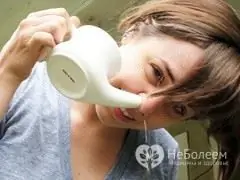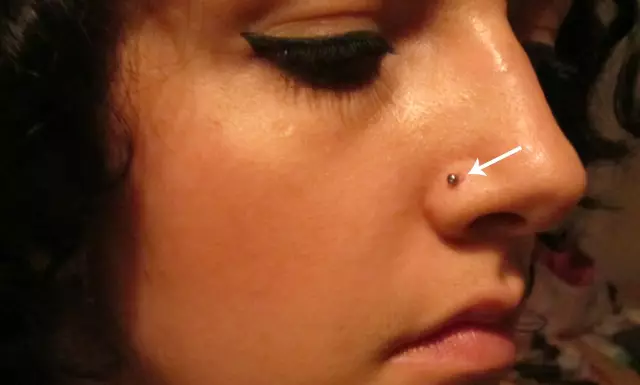- Author Rachel Wainwright [email protected].
- Public 2023-12-15 07:39.
- Last modified 2025-11-02 20:14.
Rinsing the nose at home

What is the use of rinsing the nose at home? Usually this procedure is used as a medical procedure, however in some cultures, such as the Vedic, rinsing the nose is as necessary as hygienic procedure as brushing your teeth. Yogis believe that rinsing keeps the nasal passages clean, providing better breathing, and they recommend that everyone do this procedure every morning.
It is difficult to say whether there is such a need, but the fact that with the help of rinsing the nose, sinusitis and its treatment at home are much faster. This method treats not only sinusitis, but in general all diseases associated with inflammatory changes in the nasopharynx. Rinsing the nose at home allows you to have a beneficial local effect on the inflamed mucous membrane of the nasal passages: wash out mucus and pus, eliminate nasal congestion, improve nasal breathing, and prevent further spread of infection.
How can you rinse your nose at home? It can be just boiled water at body temperature, but if we are talking about a therapeutic effect, and not just about hygiene, then it is advisable to add substances with medicinal properties to the water. So, if you add a little salt to the water for rinsing the nose (a pinch of salt in a glass of water), such a solution will have a vasoconstrictor effect, like soft vasoconstrictor drops for the nose. The advantage over drops is that mucus is washed out and a therapeutic effect on the mucous membrane is exerted. You can use decoctions of medicinal herbs, for example, a decoction of chamomile or sage. Alcohol tinctures, even diluted ones, and other strong substances are not recommended for nasal washes, as they can cause burns of the nasal mucosa.
How is nasal lavage performed at home? The easiest way is with a teapot. The prepared medicinal solution or broth is poured into a small teapot, bending over the sink, the spout of the teapot is inserted into one nostril, and the liquid is poured into the nose. Then repeat this for the other nostril. In addition to the kettle, you can use a small syringe or special nasal rinsing devices sold at the pharmacy. The procedure is correct if the solution begins to pour out of the other nostril along with the contents of the nasal passages, and incorrectly if the liquid flows into the mouth.

If the nose is stuffy, then the edematous mucous membrane may not let the liquid go inside, and therefore it is necessary to prepare the nasal passages for washing by instilling vasoconstrictor drops. You can not rinse the nose at home for people with epilepsy, as this can provoke an attack. It is also undesirable to use the lavage method for those who are prone to nosebleeds.
Found a mistake in the text? Select it and press Ctrl + Enter.






